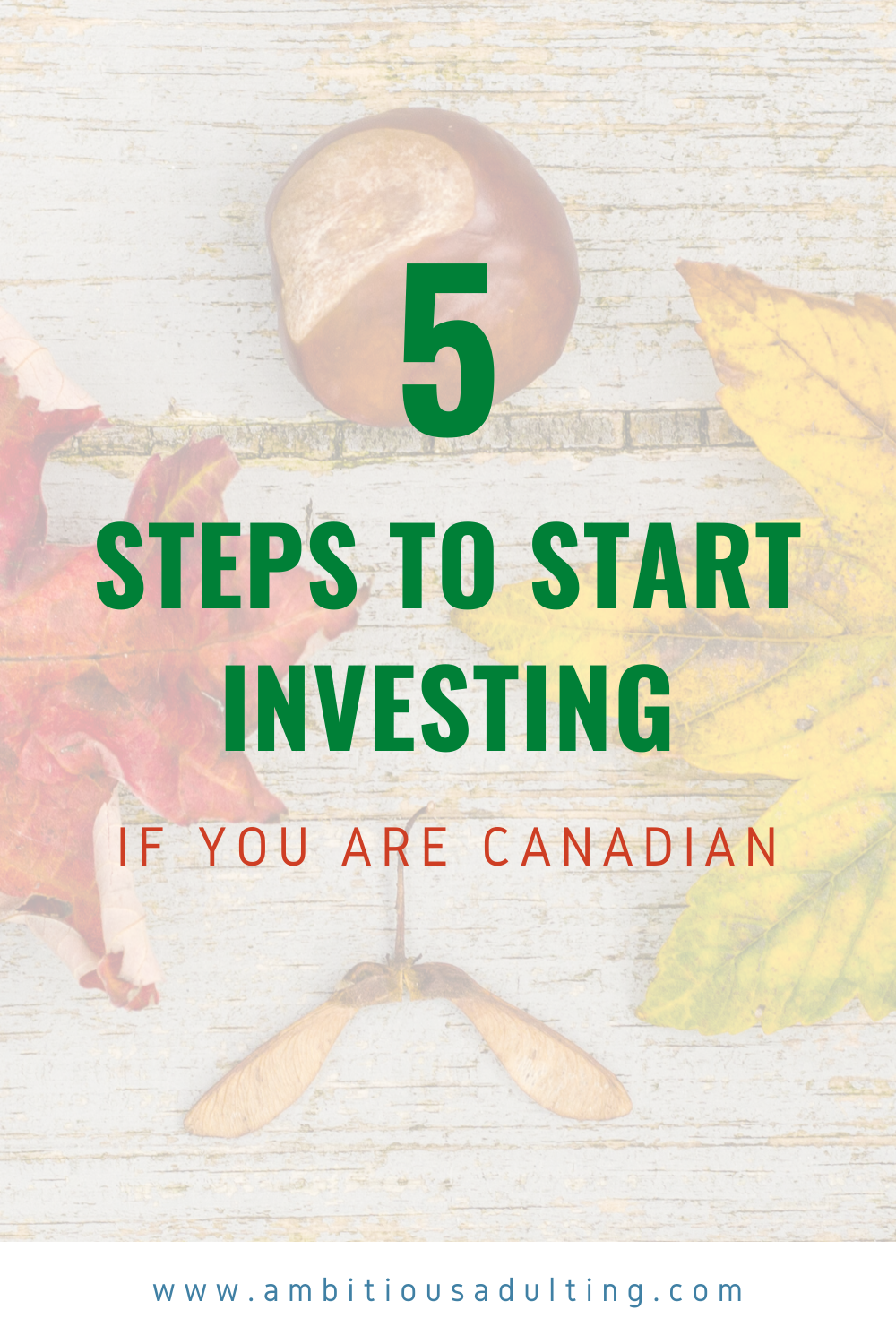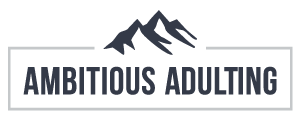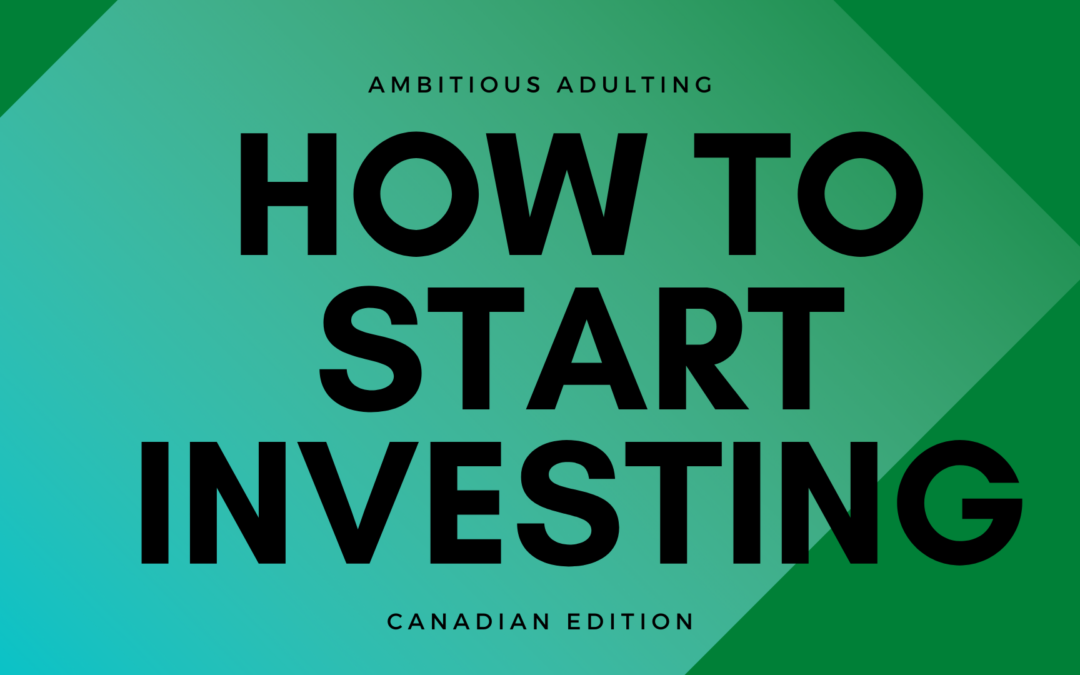People ask me every day,
“How did you start investing?”
“How can I start investing?”
They tell me,
“I’m scared of losing money”
“I don’t know where to start”
“I don’t know where to learn”
All of your fears are normal and expected.
When I started investing, at 18 years old, I was too intimidated to go to a bank. I was embarrassed by my lack of knowledge and didn’t feel comfortable talking with an adviser. When I did meet with an adviser in my early 20s, I felt that I didn’t have enough money to be taken seriously. I felt that everything they said went over my head. Projections, returns, interest, horizons, asset allocation. It was all too complicated for me.
I was determined to learn about personal finance so I continued to teach myself and managed to grow my net worth to $100,000 by the time I was 26. I used trial and errors, read reports, talked with experts and now I am sharing my strategies to help others take control of their money.
This blog post is going to break down the 5-steps I took to start investing.

Step 1: I got to know myself
When I started investing, I didn’t have a clear goal. I guess I was saving for retirement. Since retirement seemed so far away, I didn’t make large contributions into my TFSA. I invested a few hundred bucks here and then which wasn’t the most structured system.
As I learned more about investing, I realized I needed to get clear on my goals so I could create a plan.
I needed to know:
- what I wanted in life
- my timelines
- and my baseline numbers (income and expenses)
Step 2: I created a budget
I started a cash flow tracking sheet to understand how much money I was making, how much I was spending, and how much I wanted to make. At the time, I was running my side-hustle Shoutouts Hamilton so I could hustle harder if I wanted to make more money.
There are many ways you can budget. Many people like apps, but after trying a few apps, I decided I liked to use a spreadsheet. I know it’s more manual and time consuming, but there is something relaxing about going through my budget and it makes me take a closer look at my spending and income. Google Sheets and Microsoft Excel have some pre-made templates for you to try or you can use the Exact budget template I use. Subscribe to my newsletter to get access to it.
Step 3: Save money and pay off debt
Reality check!
In order to invest, you need money. If you don’t have an income, or you’re drowning in credit card debt, it may not be the best idea to invest. Personal Finances is a journey.
When I started investing, I was still a student and had a loan but it was considered “low-interest” and the theory is that you can make more money in the stock market, than the low-interest debt so it’s usually OK to invest even if you have student loans or a mortgage. However, if you have “high-interest debt”, focus on paying that off first.
Step 4: Find your investing strategy!
If you have an emergency fund (at least 3 months of expenses) and you don’t have high-interest debt, you may be ready to start investing.
One of the first things you’ll want to figure out is if you want to be a passive, or an active investor.
Passive Investing
- Hands-off approach
- Limits the amount of buying and selling within a portfolio
- Buy-and-hold mentality
- Typically follows an index or a pre-made portfolio
- Takes advantage of lowers fees
- You can buy pre-made portfolios
Active Investing
- Hands-on approach
- Requires active management
- Goal is to beat the stock market’s average return
- Active management takes advantage of stock price fluctuations
- Requires analysis and confidence
If you’re brand new to investing, one option to look into are robo-advisors. Based on my research and experience, they are the easiest way to start investing.
A robo-advisor selects investments for you after you complete an investor’s questionnaire.
A questionnaire will ask you questions like this:
- When you do want to take out your money?
- When will you need this money?
- Do market fluctuations worry you?
- How comfortable are you with investing?
- What is your age?
- What do you expect to be your next major expense?
- At what age do you plan to retire?
- What would you do if one of your investments loses 15% of its value shortly after you bought it?Once the robo-advisor knows your preferences, you will be presented with a pre-made portfolio.
The portfolios could be conservative, balanced, growth, and/or aggressive. If you want to focus on not losing too much money, you may be in a conservative portfolio. On the other hand, if you want to take your chances to get higher returns, you may end up in an aggresive portfolio.
The two most popular robo-advisors in Canada are WealthBar (“WealthBar formally rebranded as CI Direct Investing on August 5, 2020. CI Direct Investing is part of CI Financial, one of the country’s largest investment companies. Under this new brand, clients continue to have access to professionally managed portfolios and financial advice at their fingertips.”) and Wealthsimple.
Open a Wealthbar account today! or Try Wealthsimple.
Pre-made portfolios do all the research for you and it’s very straightforward.
However, these are a few other ways you can invest:
You can invest through a bank:
Bank staff can recommend financial products for you to buy (keep in mind they may make a commission). Some banks also have direct investing platforms so you can save some fees.
You can invest through a online discount brokerage.
This is a more active and hands-on approach and often results in fewer fees. You need to do your own research and there is more risk involved than a pre-made portfolio. Questrade is a popular option in Canada, use this code to open your account 545804664427750
You can invest through an investment firm.
This route is usually passive because you pay someone to manage your money.
Step 5: start investing
Once you pick your investing style, the next step is to open your Tax-Free Savings Account (TFSA) and/or your Registered Retirement Savings Plan (RRSP).
These accounts are meant for investing and they have specific conditions. For example, your TFSA is flexible and has annual contributions that fluctuate. Your RRSP is specifically made for retirement, but you can also use the money in there if you are buying your first home, or using it for education.
After you decide which account to use, you can start investing.
To grow your money, it’s recommended that you set auto-deposits into your account. This could be $50/week or $100/month or whatever you decide. Just remember, pay yourself first! Before you spend money on eating out, shopping etc. put some money aside for your future goals.
If you want to get started with Wealthbar or Wealthsimple, click on the banners.





